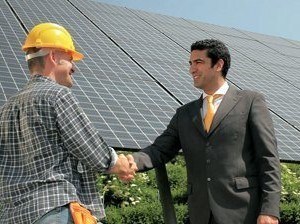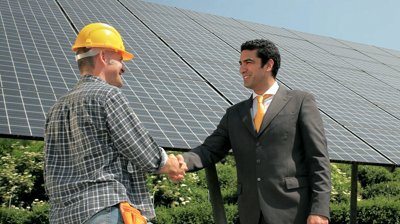Amidst the Cabinet’s division over what should be done with Australia’s Renewable Energy Target (RET), the Clean Energy Council (CEC) recently claimed that the number of commercial solar power installations has reached 15,000 and “tens of thousands more” of these businesses will “follow suit” should the RET be “left as legislated.” Prime Minister Tony Abbott has all but scrapped the RET while Environment Minister Greg Hunt wants it scaled back.
The government is considering a RET review, courtesy of businessman and former Caltex chairman Dick Warburton, who was head of the panel that recommended to shut out new entrants or close it until there is an expansion of energy demand, a scenario not likely due to an excess in capacity of coal-fired power consumption. The RET was to have comprised 20% of the country’s goal to achieve 41,000 gigawatts (GWs) by 2020, but because of the electricity demand’s overall fall, has now been equated to 26%.
The 20% RET is the Best Outcome for Commercial Solar Power
Not to mention the risk of unemployment and billion dollar investments down the drain should the RET be closed or pared back. Cutting the RET, explained CEC acting chief executive Kane Thornton, would have “no benefit to consumers.” Leaving the RET alone, he said, can help significantly towards job creation, investment generation and commercial solar power installations.
Scrapping the RET will make it more difficult for businesses to choose commercial solar power over traditional grid-sourced electricity. Business Council of Australia chief executive Jennifer Westacott expressed the need for Australia’s major political parties to concur on a revision of the RET.
According to Westacott’s opinion piece, published by the Australian Financial Review, bipartisan support amongst business, the renewable energy industry, and the community for “a true 20% RET” would be “the best outcome,” translatable to meeting the RET’s megawatt goal without becoming a huge financial burden on consumers.
Greens, the Palmer United, and Labour parties have voiced opposition to RET revisions. Simply put, the Abbot government will not have a sufficient number of votes in the Australian Senate to change it.
The RET, introduced during the administration of John Howard, requires the purchase of clean energy certificates by energy producers to meet the target for renewable energy sources to benefit residential and commercial solar power applications.
Investments in commercial solar power of the renewable energy industry have been cancelled or halted as a result of the uncertainty brought about by the RET’s review by the Warburton panel.
The Solar Council, meanwhile, hopes to target 20 of the most marginal electorates of the Coalition. In an interesting twist, Education Minister Christopher Pyne is reportedly throwing his all-out support for the RET.
What Pyne Reportedly Told Solar Installers
According to Guardian Australia, Pyne met with solar installers and told them that he does not want changes made to the present terms of the RET, which mandates that the country meet the previously mentioned 41,000 gigawatt hours from renewable sources like wind and solar by the year 2020.
Pyne’s spokesman, however, was more vague about it, saying that the Education Minister “indicated” the government’s review of the Warburton report is ongoing and options are being considered, including those of commercial solar power installations.
The spokesman also said that “no one” should be of the assumption that there will be an abolition of the RET. This development comes as mounting pressure continues for Labour to commit to a compromise. Labour, however, is not showing any signs of foregoing its adamant opposition to changes made or even proposed to the RET, which have the potential to damage commercial solar power.
Mark Butler, environment spokesman for Labour, said the Prime Minister’s government “shattered any notion of bipartisanship” for the RET the moment it turned away from the election commitment to retain the existing 41,000 GW hours by the year 2020.

